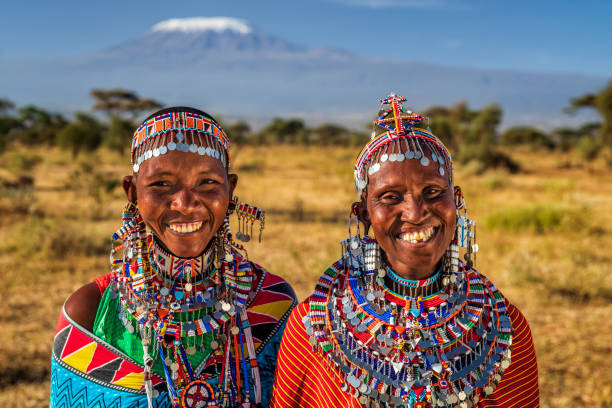
We are all Africans beneath our skins. That is the latest, straightforward finding of experts researching our species’ beginnings. Men and women today are direct descendants of hunter-gatherers who evolved somewhere in Africa and took over the continent before one group departed to conquer the rest of the world tens of thousands of years ago, according to genes, ancient stone tools, and fossil bones analysed over the last few decades. Deep scepticism has been expressed in response to a study that claims to have discovered our species’ ancestral homeland in southern Africa.
The study analyses genetic data to prove that the Okavango Delta in Botswana is where our species began. Other scholars, on the other hand, claim that the methodologies utilised to obtain this conclusion are incorrect.
The research is the most recent effort to answer a long-standing question. While there is strong evidence that our species evolved in Africa, the exact location is unknown. Eastern and southern Africa, with their abundant fossils, have both been considered our ancestral home. Yet, given the fossil findings across Africa, many anthropologists now believe that interbreeding populations existed continent-wide, negating a single homeland.
Birthplace of a species
Vanessa Hayes and her colleagues from Sydney’s Garvan Institute of Medical Research collected over 1200 DNA samples from people in southern Africa. The DNA samples were all mitochondrial DNA, which is inherited only from mothers. This information was utilised to generate a family tree that depicted when ancient populations divided.
They came to the conclusion that the oldest lineage appeared around 200,000 years ago, which they believe is when our species began. The researchers, finding no evidence of intermingling between groups, deduced that these populations remained largely stationary after their formation. Based on the location of the oldest varieties today, they suggest Makgadikgadi-Okavango, a large wetland in Botswana, as our species’ birthplace.
This marsh no longer exists, but there is evidence that it previously did. When Lake Makgadikgadi dried up, the region became a large salt pan. From 2 million years ago to roughly 10,000 years ago, this massive lake existed.
Humans only spread beyond the Makgadikgadi-Okavango when the climate changed, according to the researchers. Changes in Earth’s orbit over the last 200,000 years would have moved Africa’s rain belts, allowing green passageways from the Makgadikgadi-Okavango to other parts of Africa, according to research team member Axel Timmermann of the Institute for Basic Science in Busan, South Korea.
These modifications appear to correspond to population divides shown by mitochondrial DNA: A small group split off to the north-east 130,000 years ago, followed by a larger dispersal to the south-west 110,000 years ago.
Methods of experimentation under fire
Although the story seems fascinating, experts in human prehistory are not impressed.
The problem, according to geneticist Mark Thomas of University College London, is that mitochondrial DNA cannot inform us about such ancient populations. Mitochondrial variations only have a limited correlation with individual populations, and this correlation worsens as time passes.
“When you go back to the mitochondrial common ancestor, which was roughly 200,000 years ago, the tree must have no information about our demographic history,” Thomas explains.
According to Eleanor Scerri of the Max Planck Institute for the Science of Human History in Jena, Germany, the report also ignores evidence showing our species is more than 200,000 years old.
Moroccan fossils, for example, imply that our species is at least 315,000 years old. It may be claimed that these fossils aren’t modern enough to be humans, but that is also true of numerous southern African fossils, according to Scerri. “Until between 100,000 and 40,000 years ago, no single individual possessed the constellations of features that distinguish us today.” People in southern Africa are likewise unlikely to be “evolutionary relics who have not evolved or moved geographically for tens or perhaps hundreds of thousands of years,” according to Scerri. If populations have migrated or altered dramatically, their current sites cannot be used to determine when our species first appeared.
The evidence in our faces
Modern humans are described as having small, narrow faces, a prominent chin, and a rounded cranium. In ancient Africa, these characteristics begin to appear in sporadic patterns. The oldest known H. sapiens skulls feature human-like faces, but their skulls are long rather than spherical. This shows that the H. sapiens species evolved our distinctive round skull and brain, not those who came before. Some have speculated that the fossils with various skull forms are merely from a more primitive species.
However, Scerri, Stringer, and their co-authors suggest that the H. sapiens lineage dates back at least 500,000 years and that its evolution would have included more primitive fossils. ‘All of the head traits that characterise current people do not exist until relatively recently, between 100,000 and 40,000 years ago,’ explains Scerri.
Instead of a single evolutionary line, semi-isolated H. sapiens populations possibly evolved at varied rates alongside each other. Vast distances or barriers like deserts and forests caused this thousand-year separation.
It’s believed that H. sapiens descended from interconnected groups, separated and linked at different times. Each one possessed a unique set of physical characteristics, a mix of ancestral and modern qualities.’
The middle stone age
The Middle Stone Age started in Africa over 300,000 years ago, signaling a cultural shift with the use of prepared core technologies. Ancient humans created these hand tools by shaping rocks like flint, removing small bits before flaking off larger pieces. Researchers have found more complex stone tools from this era across Africa.
Diverse human groups crafted a range of tools. Central Africans made heavy axes, bifacial lanceolates, blades, and picks. Meanwhile, tanged tools emerged in North Africa’s grasslands and savannahs.
While the Middle Stone Age began concurrently across Africa, different regions produced distinct tools. This variation suggests long-term separation of human groups, likely due to geographic barriers like deserts and rivers.
This data from across Africa supports the theory that modern people evolved across the continent rather than in a single location. ‘It is fascinating that diverse sorts of data seem to support one another, all of which is crystallising into an exciting new understanding of our origins,’ says Scerri.
Before You Go…
Hey, thank you for reading this blog to the end. I hope it was helpful. Let me tell you a little bit about Nicholas Idoko Technologies. We help businesses and companies build an online presence by developing web, mobile, desktop, and blockchain applications.
We also help aspiring software developers and programmers learn the skills they need to have a successful career. Take your first step to becoming a programming boss by joining our Learn To Code academy today!
Be sure to contact us if you need more information or have any questions! We are readily available.
[E-Books for Sale]
1,500 AI Applications for Next-Level Growth: Unleash the Potential for Wealth and Innovation
$5.38 • 1,500 AI Applications • 228 pages
Are you ready to tap into the power of Artificial Intelligence without the tech jargon and endless guesswork? This definitive e-book unlocks 1,500 real-world AI strategies that can help you.
See All 1,500 AI Applications of this E-Book
750 Lucrative Business Ideas: Your Ultimate Guide to Thriving in the U.S. Market
$49 • 750 Business Ideas • 109 pages
Unlock 750 profitable business ideas to transform your future. Discover the ultimate guide for aspiring entrepreneurs today!
See All 750 Business Ideas of this E-Book
500 Cutting-Edge Tech Startup Ideas for 2024 & 2025: Innovate, Create, Dominate
$19.99 • 500 Tech Startup Ideas • 62 pages
Put Your Tech Company on the Map!
Get featured on Nicholas Idoko’s Blog for just $50. Showcase your business, boost credibility, and reach a growing audience eager for tech solutions.
Publish NowYou will get inspired with 500 innovative tech startup ideas for 2024 and 2025, complete with concise descriptions to help you kickstart your entrepreneurial journey in AI, Blockchain, IoT, Fintech, and AR/VR.
We Design & Develop Websites, Android & iOS Apps
Looking to transform your digital presence? We specialize in creating stunning websites and powerful mobile apps for Android and iOS. Let us bring your vision to life with innovative, tailored solutions!
Get Started Today



